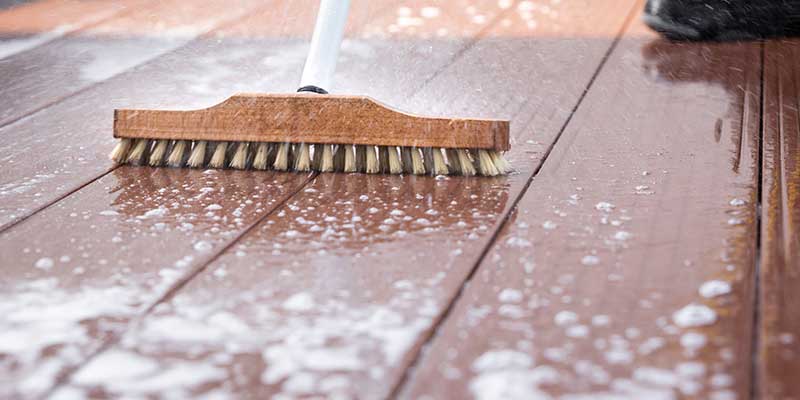
Top 7 Tips for Deck Maintenance for Marietta Summers: Stain, Seal, or Rebuild?
Marietta’s long, sultry summers turn beautiful outdoor living spaces into year-round home extensions, yet those months punish exposed lumber more aggressively than any other season. Direct UV rays bake protective pigments, afternoon thunderstorms hammer joists with wind-driven rain, and thick blankets of yellow pollen settle into every hairline crack. The combination accelerates wood-fiber breakdown, shortens stain life, and encourages mold colonies that can become slippery under bare feet.
Understanding how Georgia’s specific climate attacks decking helps homeowners adopt proactive strategies instead of reactive repairs, saving money and weekend leisure time. On this blog, you will find seven professional deck maintenance tips from our D&R Painting and Construction experts.
Understanding How Climate Can Ruin Your Deck
Sunlight bleaches pigments and degrades lignin, the natural glue that binds wood fibers. July’s solar index in Cobb County routinely exceeds manufacturers’ levels when testing exterior coatings. Pop-up storms add sudden moisture that seeps into micro-checks. At the same time, oak and pine pollen convert any horizontal surface into a sticky film that traps moisture and mildew spores until washed away.
Most transparent and semi-transparent finishes in temperate zones carry a projected life span of two to three years. Marietta’s UV intensity and humidity can halve that estimate if maintenance lapses. Mold thrives when airborne spores land on damp, nutrient-rich surfaces like untreated deck boards dusted with pollen. Left undisturbed, colonies root into the wood grain, leading to black spots that bleach won’t entirely erase without damaging fibers.
#1: Deep Clean to Remove Pollen, Mildew, and Barbecue Grease
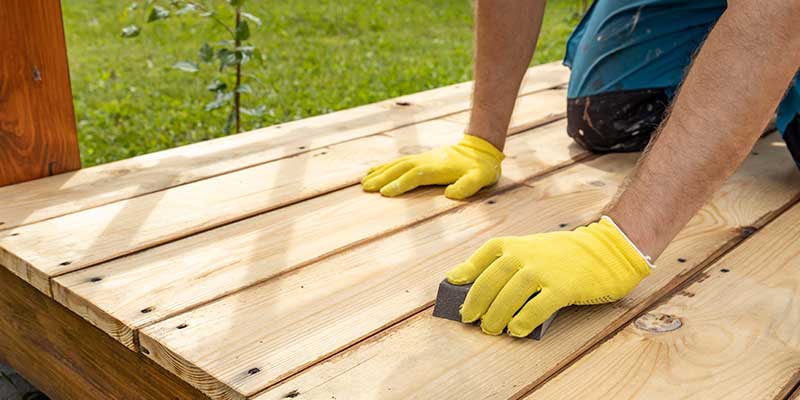
A spotless canvas is the first critical step in any wood deck treatment. Annual deep cleaning clears organic buildup so protective coatings adhere properly and vision-obliterating haze disappears. Select an oxygenated bleach formula rather than harsh chlorine to lift embedded stains while remaining safe for surrounding vegetation. These products activate with water, producing bubbles that break surface tension and float grime to the top without excessive scrubbing.
Maintain a pressure range between 800 and 1,200 PSI with a 25-degree nozzle and keep the wand at least twelve inches above the surface. Higher settings etch softwood, creating gouges that collect dirt faster. Composite boards tolerate slightly higher pressure, but ensure the manufacturer approves of power washing to preserve warranty terms.
#2: Inspect for Sun-Baked Cracks and Loose Fasteners
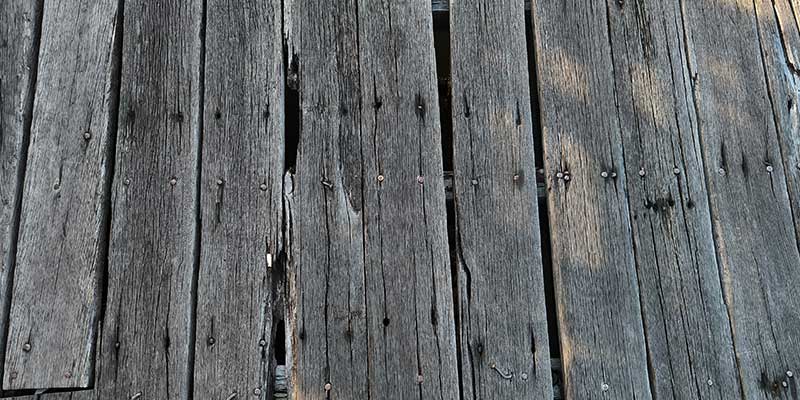
Post-cleaning inspections reveal structural issues hidden beneath dirt. Boards aligned east-west take the brunt of midday sun, expanding and contracting until small fissures emerge. Probe suspect areas with an awl; rot may be present if the tool sinks easily. Nail pops or screw lifts often signal joist movement as fasteners lose bite in shrinking wood.
Suppose a crack runs less than one-third of the board width, countersink and secure the plank with two stainless screws before sanding flush. Boards with rot or splits beyond half their width should be replaced entirely to restore deck integrity and maintain stringent safety standards.
#3: Restore Color With UV-Blocking Stains or Sealers
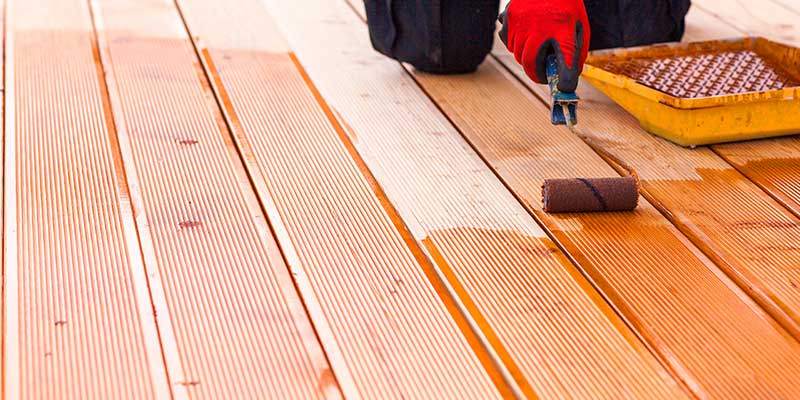
After repairs, protect fresh surfaces to lock out the sun and moisture. Oil-based stains penetrate deeper and excel at water repellency, making them excellent for older, drier southern yellow pine. Water-based products cure faster, emit lower odors, and resist mold better because they contain mildewcides suited for humid climates. The choice hinges on board porosity, desired dry time, and environmental regulations.
Apply coatings between 60°F and 85°F. Early morning lets you work in cool shade, ensuring even absorption before the blazing afternoon sun skims moisture from the finish, potentially trapping bubbles or causing lap marks. Never coat within 24 hours of predicted thunderstorms to allow proper curing.
#4: Protect Against Afternoon Thunderstorm Water Damage
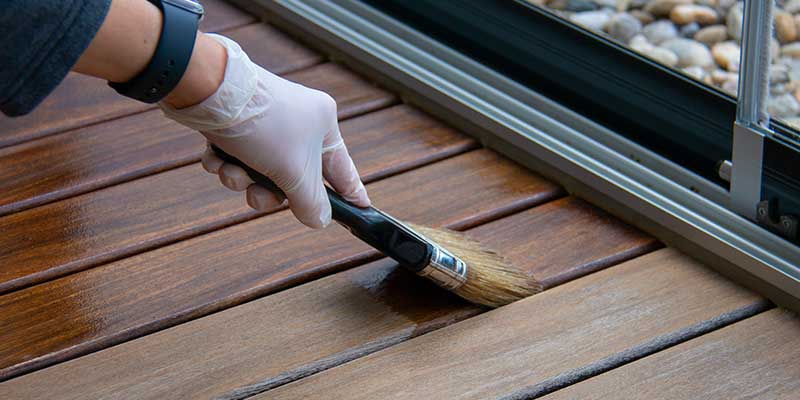
Even fresh stain fails if water drainage remains poor. Deck boards should tilt one-eighth inch per foot away from the house. Check the slope with a four-foot level. For learning how to clean decks, verify that downspouts discharge at least five feet from footings to avoid soil erosion that may shift support posts.
If a covered space or patio exists beneath the deck, consider membrane troughs that channel water to a gutter at the rim joist. This investment shields outdoor seating and extends the usability of lower-level entertaining zones even during Marietta’s summer cloudburst.
#5: Prevent Mold and Algae With Routine Airflow and Debris Removal
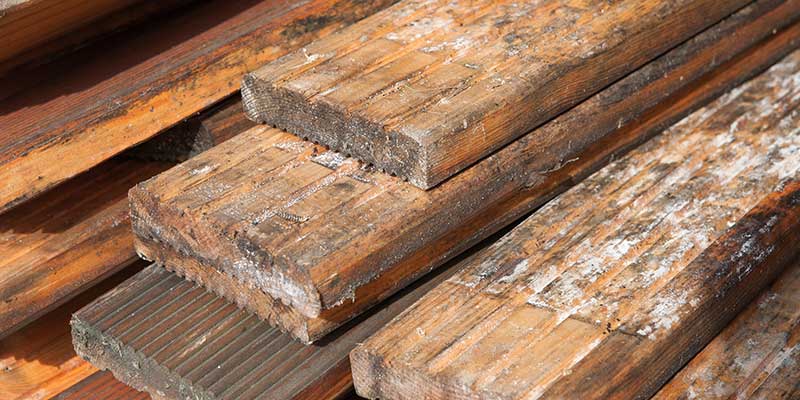
Air circulation dries surface moisture and starves microorganisms. Prune limbs to create at least six feet of clearance above the deck. Increased sunlight quickens evaporation and discourages moss that often takes root in persistent shade.
Weekly sweeping of organic litter eliminates fertile ground for fungal spores. Blowers can help, but brooms are gentler on delicate stain films, preventing premature abrasion.
#6: Safeguard Hardware From Corrosion in Humid Conditions
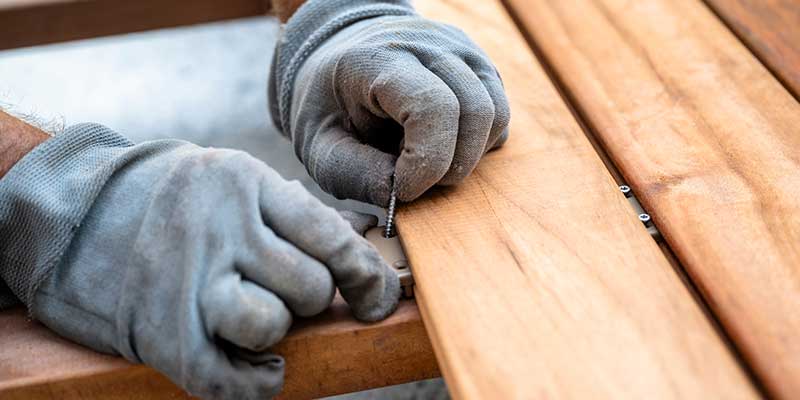
Hidden connectors are the deck’s skeleton; rust undermines load capacity. If original hardware consists of plain steel nails, retrofit with stainless screws through-bolted where feasible. Hot-dipped galvanized joist hangers resist Georgia humidity far better than electro-galvanized counterparts.
A light annual coat of evident, exterior-grade rust inhibitor seals microscopic scratches, delaying oxidation and preserving aesthetic symmetry between wood and metal elements.
#7: Prepare for Summer Entertaining With Safety Checks
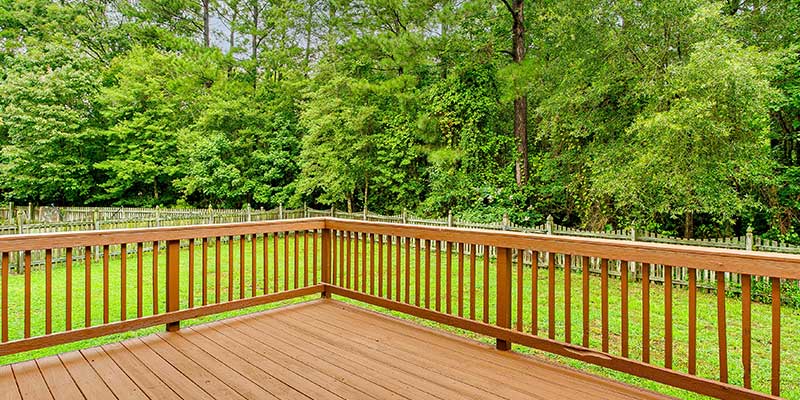
Learning how to maintain a deck is important, but structural confidence ensures gatherings remain incident-free. Apply 200 pounds of lateral force to railings, roughly the weight of an adult leaning. Any wiggle warrants re-securing with longer lag screws or replacing posts. Bounce gently on treads to detect flex; movement indicates riser or stringer deterioration.
Adhesive traction strips or sand-infused transparent coatings reduce fall risk when guests migrate from splash zones to grilling stations, satisfying both safety and comfort goals in caring for decking used by children and adults alike.
A Proactive Summer Deck Routine Extends Lifespan and Enjoyment
Marietta summers challenge decks with searing UV, humidity-fueling mold, abrasive pollen, and patio traffic invasion. Embracing a holistic maintenance strategy transforms routine chores into long-term investments. The result is a resilient outdoor stage ready for July barbecues, August sunsets, and the shoulder-season dinners that stretch alfresco living well into autumn. These deck maintenance tips preserve structural integrity, showcase natural wood luster, and safeguard family gatherings for years.
DIY diligence goes far, but expert eyes catch subtle slope misalignments and hidden rot before they become costly rebuilds. D&R Painting and Construction deck specialists offer comprehensive evaluations that include moisture readings, fastener inspections, and personalized wood deck treatment plans.
Book your complimentary assessment now, and step confidently into a summer of splinter-free, color-rich, and structurally sound outdoor living.

